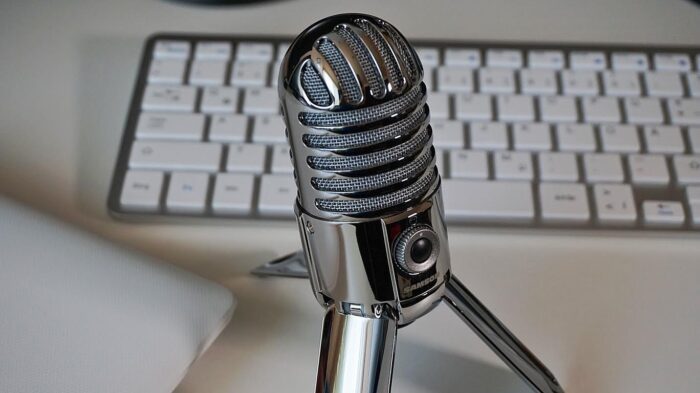
wireless microphone
In recent years, corded microphones have been replaced by more convenient and functional – wireless. Such microphones are most often used by leading events, karaoke lovers. Also, devices are in demand among teachers and tour guides. Read more about wireless microphones on microphonetopgear.
Types of microphone: capacitor or dynamic
By the method of converting the sound wave into an electrical signal, microphones are classified into two types.
The most popular is the dynamic microphone, and it has a common name – classical. The microphone is inexpensive, as its response to high frequencies is weakened compared to other representatives. But because of its less sensitive structure, there is less extraneous noise.
The second type is the capacitor. Devices of this type have a weakened electrical signal, in contrast to dynamic ones. But this option is the most sensitive to high frequencies, therefore, condenser microphones are suitable for thin female vocals and are best used for Studio recording.
Infrared and FM microphones: what’s better
It is worth paying attention to the type of microphone – infrared or FM. Such devices operate on two different technologies-light and radio emission. Despite this, infrared and radio microphone have similar characteristics.
The infrared microphone is selected when:
- a secure and secret connection is required: the infrared signal is almost impossible to intercept;
- when using it, there should be no third-party noise (leads);
- several wireless systems that fall within the range of the microphone will be connected at the same time.
- the performance will be held in a closed space, without sunlight.
The FM microphone is selected when:
- privacy and security are not a priority;
- the sound transmission distance is no more than thirty meters;
- the microphone is planned to be used in excursions, lectures, and conferences.
The orientation of the microphone: types and brands
One of the most important aspects of choosing a microphone is directivity – how sensitive the device is to sound waves, depending on the location.
This feature sets the position of the speakers. You will also need the best microphone boom arm to aid your microphone’s positioning.
Accordingly, microphones are available with two, one direction, or all directions.
The omnidirectional device picks up most sounds. So vocalists should keep this type of microphone as close to their lips as possible, as extra noise can distort the vocals. The best microphones of this type: Yeti, Kiwi, Bottle Rocket.
Unidirectional captures only one sound source, the coverage angle is 65 degrees. Best devices: Spark SL, Bluebird SL, Baby Bottle SL, Hummingbird, Dragonfly, Blueberry.
A device with two directions has a sound coverage angle of 90 degrees. So this type of microphone captures two sound sources. Representatives of the bi-directional microphone are Yeti Pro, Bottle.
Signal transmission options
Wireless microphones can be analog and digital. The difference is that the analog microphone reproduces the transmission of signals using radio frequency – with interference. A digital microphone is more expensive but provides seamless signal transmission via Wi-Fi.
Power Types
Wireless microphones need batteries because of the lack of a cord and therefore cannot work without recharging. Wireless transmitters also need power. Most often, AA or nine-volt batteries are used for this purpose.
Body material
Differences in price may also be due to material. The most commonly used material is plastic or metal. Plastic is cheaper than metal, but it is also less wear-resistant. And the microphone made of plastic is much lighter than metal. Metal microphones are stronger, but unfortunately, they are susceptible to corrosion, and this option is heavier.
The sensitivity of the microphone
When choosing a microphone, you should pay attention to the frequency, because each musical instrument needs its frequency:
- for a grand piano – from 27 to 4100 Hz;
- for bass guitar – from 42 to 260 Hz;
- for cello – 66 to 870 Hz;
- for acoustic guitar – 81 to 1175 Hz;
- for pipe – from 160 to 990 Hz;
- for violin – from 210 to 2750 Hz;
- for flute – from 560 to 2350 Hz.
There are also certain frequencies for different types of human voices:
- for bass – from 75 to 320 Hz;
- for tenor – from 120 to 500 Hz;
- for soprano – 200 to 1100 Hz;
- for normal spoken voice – from 60 Hz.
Wireless microphone manufacturers
If the choice falls on the budget segment, you should pay attention to such brands: Canyon, Genius, Bravis, Defender, DeTech, Plantronics. Microphones of these firms are produced in China and are not of high quality.
Sony and Logitech have high-quality devices and good service.
Shure and Neumann are the most popular manufacturers of wireless microphones, these brands also have budget options.
Conclusion
When choosing a microphone, you should rely on the following points:
- purpose of use (Studio, vocal, or karaoke):
- the place where the device will be used (open space, closed room);
- the required sensitivity during the operation of the device.



You must be logged in to post a comment.